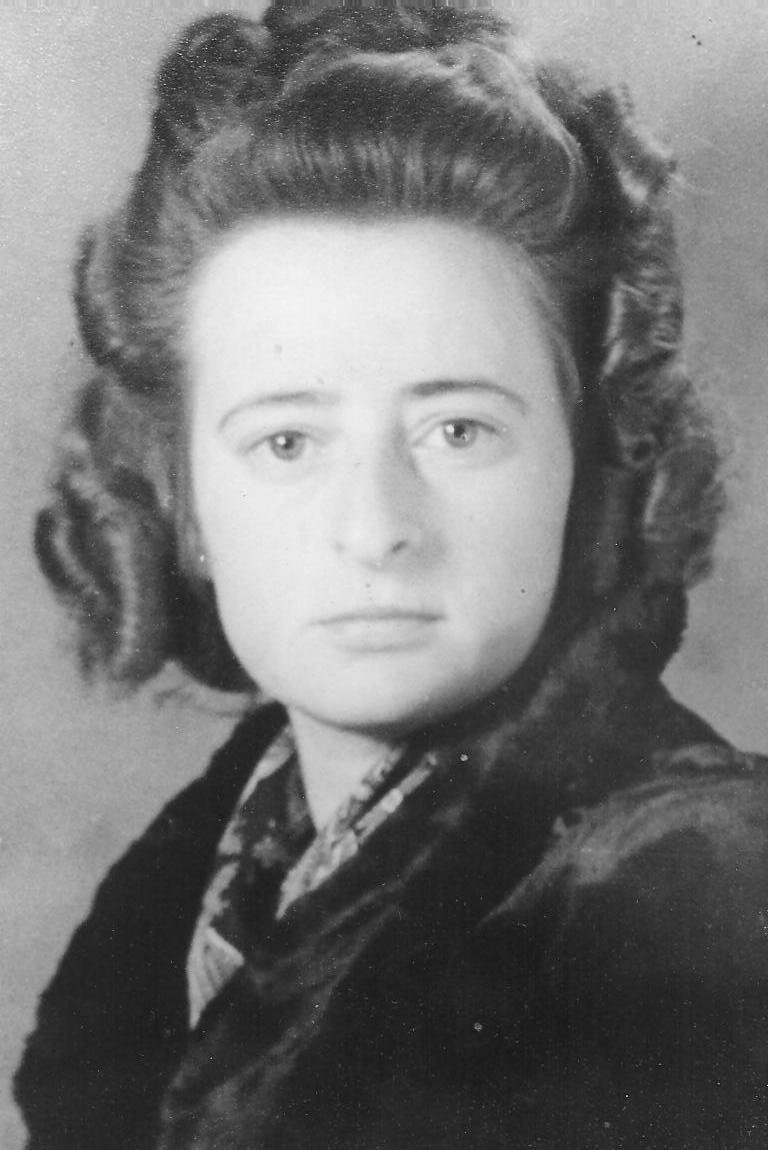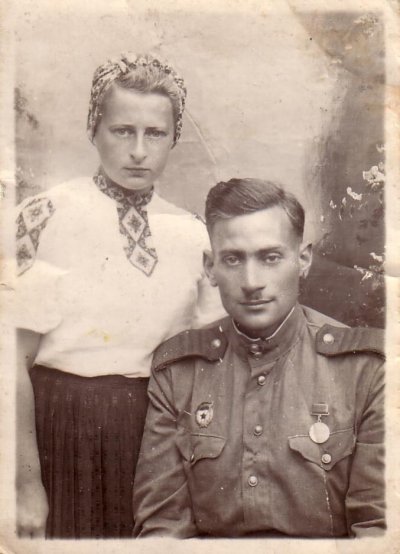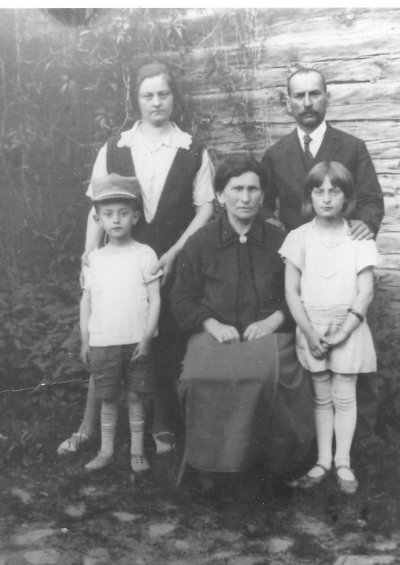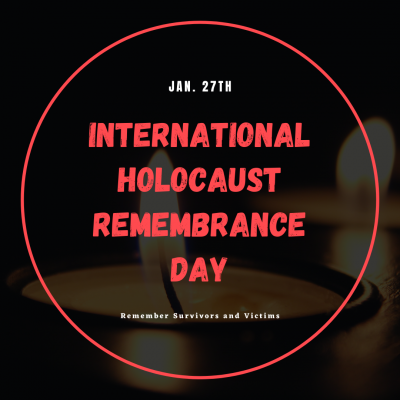
FANIA BRODSKY (DUNETZ)
On November 15, 2020 Fania Brodsky (Dunetz), a tunnel escapee from the Novogrudok ghetto, celebrated her 100th birthday.
Lessons of the Holocaust from Fania Dunetz.
Fania Dunetz's life exemplifies fierce loyalty, courage, and willingness to risk her life for another that characterized her whole family.
She was born in Zhetl (Dyatlovo) in the family of Yoel David and Esther Basia Dunetz who were in the trade business and had a store in their house selling all kinds of dry goods, shoes, and textiles. David’s mother had a grocery next to their shop. The entire extended family lived in the back of the house, whose living room was perched between the two stores.
Yoel David, Fania’s father, served in the Russian Army from at least 1907, was captured during World War I and being a prisoner-of-war performed farm work in Germany painted barns, and was also employed as an interpreter from 1914-1918.
Esther Basia, Fania’s mother, born in 1890 in the nearby town of Molchad, ran the store and took care of four children.
Fania’s grandparents lived in the house nearby. Her grandfather, Shlomo Zalman, was a grandson of Yehuda Dunetz, the Av Beit Din (presiding judge) of the Rabbinical Court of Slonim. The family’s surname “Dunetz,” is an acronym of the Hebrew words Dayan Tzedek (righteous judge).
Shlomo Zalman was a rigorous Zionist, traveled from city to city collecting funds for Zionist causes, while his wife ran a grocery store, and took care of children.
He traveled to Eretz Israel twice. In 1929 Shlomo died in the Holy Land and was buried in Jerusalem.
Fania’s grandmother, Sarah Rochel Dunetz, on the other hand, had been as disinterested in her husband's Zionist activities as he was in the grocery store she ran. There, for over fifty years, she sold herring, flour, salt, sugar, cigarettes, and more. Sarah Rochel is said to have been very energetic, stubborn, and resolutely determined to have her own way. She died on September 18, 1939, the day the Russians entered Zhetl. Local townspeople said that "she was so smart that she knew when to die."
Fania had graduated from the prestigious Novogrudok Polish High School named after Adam Mickiewicz and completed her first year of studies at the Teachers Seminary in Bialystok before the Nazis occupied Zhetl. She had also chalked up two years of experience from 1939-41 as a Russian-language teacher in her former Polish elementary school, a job she had been assigned to during the two years of Soviet rule, despite her lack of fluency in Russian.
Among her classmates in the High School was Dr. Boris Ragula, who became an interpreter to the German Gebietskommissar Wilhelm Traub during the Nazi occupation, wore a German uniform, and organized a Belarussian cavalry squadron under the German umbrella. Fania suspects that it was Ragula who later arranged for two of their common classmates to "visit" her at the entrance to the Forced Labor Camp in Korelicka street, bringing her a bit of food.
Fania had an elder sister and two younger brothers. On July 25, 1941 Shifra, Fania’s elder sister, and 119 men from Zhetl were massacred in a mass grave in the village of Skrydlevo near Novogrudok. Yoel David was ultimately murdered in Zhetl's second mass slaughter on August 6, 1942, together with Esther Basia and son Antzel (Alik), only 10 years old at his death. Fania and Motl were brought to Novogrudok labor camp in Korelicka street.
In the camp, Fania, who could speak German fluently, performed the functions of a secretary of the Judenrat (Jewish council). She sat in a booth outside the camp, primarily responsible for recording supplies that came through the gate.
Her brother Motl worked as a carpenter. Food was scarce in the ghetto. Here Fania employed her trademark daring to obtain extra food for herself and Motl. She developed a scheme by which Motl, now working in the labor camp section that manufactured wooden shoes for the Germans supplied her with scraps of wood from the workshop. She then secretly transferred these scraps to fellow inmate Sara Lidski (№152 on the escape list), a seamstress and childhood friend from Zhetl. Sara would use these purloined pieces of wood as handles for pocketbooks that she sewed from scraps of material in the dressmaking workshop. When Fania would boldly "sell" these creations to a German officer as gifts for his relatives in Germany, she would be given a piece of bread. Half of the bread went to Sara, while the other half Fania shared with Motl.
In February 1943, Fania was approached by Josef Varzan, a local camp guard who had known her family in Zhetl before the war. He offered her to escape from the ghetto with one other person she could choose. Fearing that neither she nor Motl could successfully navigate the way to the Bielski partisan detachment in the forest, she requested that they be joined by a Novogrudok native who was familiar with the terrain. When the guard refused, Fania made the supreme sacrifice in choosing a Novogrudok native, brother of tunnel escapee Matus Kabak (№72a on the escape list), to take her place and lead Motl to safety. Willing to pay with her life to save her younger brother, Fania was keenly aware of the punishment she could expect should Motl’s absence be discovered. The escape took place on May 14, 1943, a week after the fourth massacre when half of the ghetto prisoners were viciously murdered in front of those who survived.
Motl successfully reached partisans, stayed with the Bielskies for two weeks, then left for a Russian partisan detachment. He changed several partisan detachments within Leninskaya brigade and finished the war as a partisan of Krasnogvardeiski detachment. Fania stayed in the Labor Camp in Novogrudok until the escape through the tunnel. On a dark, stormy night of September 26, 1943, about 240 inmates took part in the breakout from the tunnel, which the prisoners had built from the living barrack in the ghetto. Fania’s journey toward the distant Bielski partisan detachment was guided by Henia Yarmovski (№195 on the escape list), a Novogrudok native and the mother of Fania’s friend and classmate Sonia. Together with an elderly man who also escaped from the tunnel, they took refuge in the home of Baptist Christian farmers who had been pre-war customers of the Yarmovski mill. The farmers’ kindness, the chicken they cooked, and the pillow they gave her for the hayloft accommodations is one of the few wartime accounts Fania would relate to her children. Thanks to the farmer's son who carefully directed them, they arrived in the Bielski detachment deep in the Naliboki Forest.
After the war, Fania got married and settled with her husband in the United States. In 2008 when her husband died, she moved to Israel and now lives in Jerusalem. A brave one-hundred-year-old lady has a clear mind and a good memory. She believes that a good command of German and total lack of fear in the face of danger saved her life during the war.
She left her home town Zhetl in 1945, yet she speaks Russian fluently and meets people from her home place as if they are her family. (The article is based on a chapter from the book by Betty Cohen, Fania Dunetz’s daughter)
https://www.wisdom-opportunity.com/post/how-does-it-look-after-100-years
https://www.jpost.com/jerusalem-report/fanias-extraordinary-holocaust-st...



